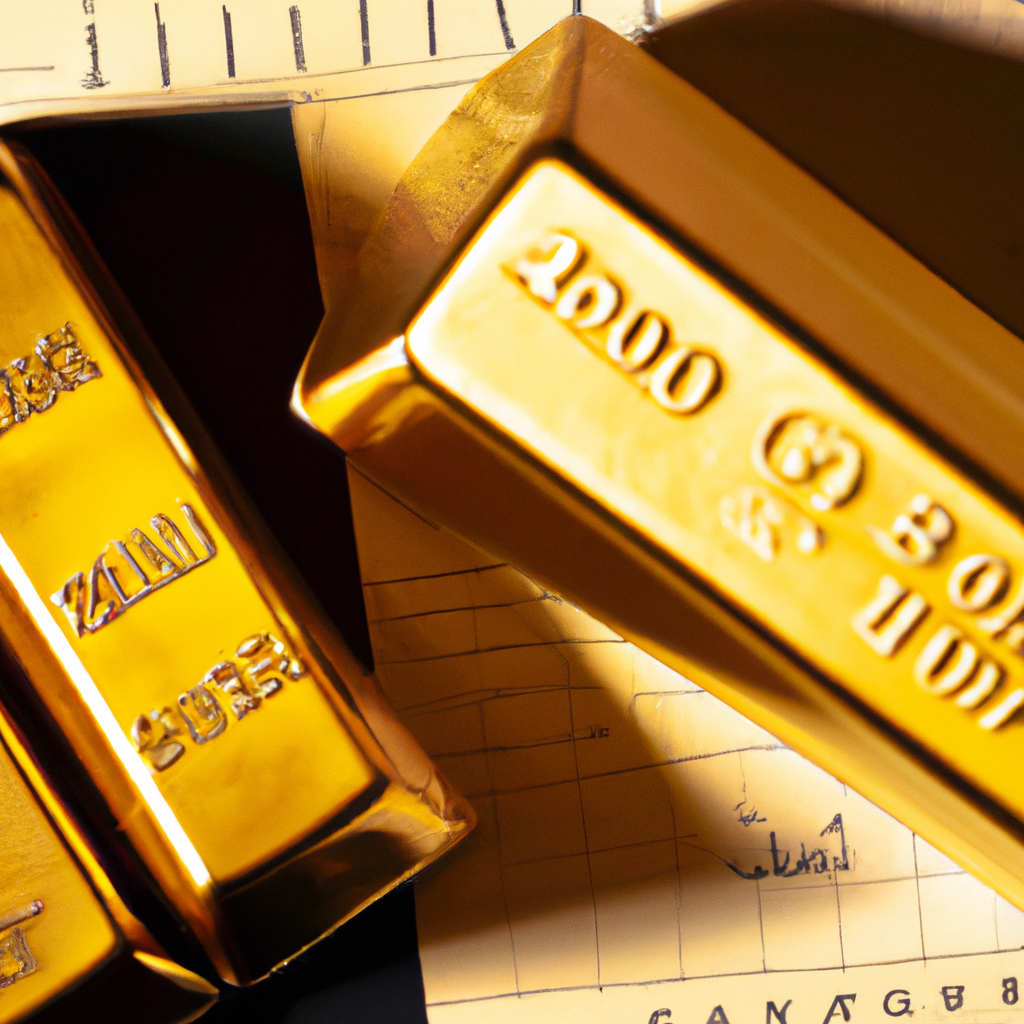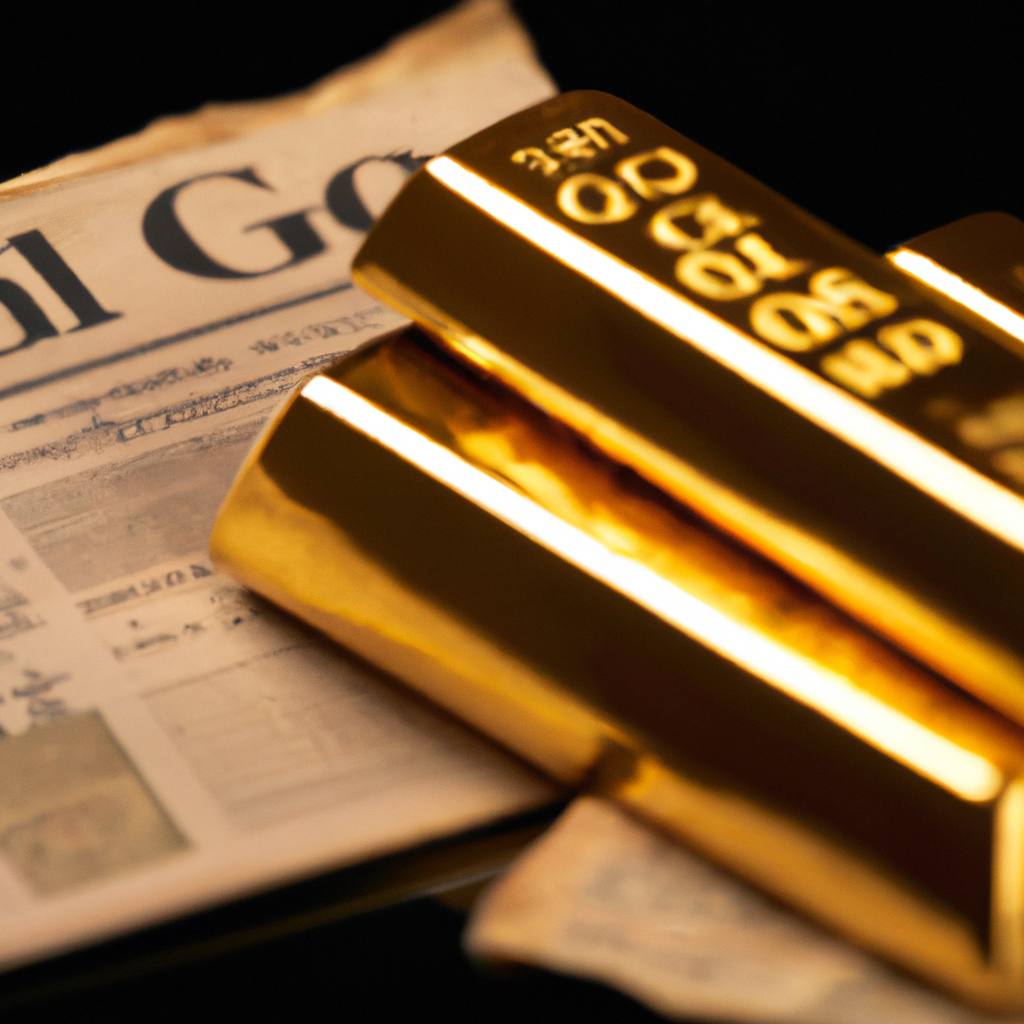As you embark on a journey through the intricacies of a deflationary economic environment, you’ll find yourself immersed in the important role that gold plays. Doesn’t a world where money gains value over time instead of losing it sound enticing? Well, you’re about to discover the thrills and downsides, coupled with the powerful role of gold as a tangibly valuable, timeless asset that stands tall amidst economic twists and turns. It’s time to explore “The Role of Gold in a Deflationary Economic Environment.”
Defining a Deflationary Economic Environment
Have you ever experienced a time when the general cost of goods and services decreases? This is what’s known as an economic deflation. It’s a phase in the financial cycle when prices of goods and services typically fall due to a decrease in supply, demand, or both.
Understanding deflation
Deflation, in its simplest terms, refers to a significant decrease in the general price levels of goods and services. It occurs when inflation rate falls below zero percent, leading to an increase in the real value of money. While this might seem like a good thing at first — after all, who wouldn’t want things to cost less? — it can actually lead to numerous economic problems if it continues for too long.
Impacts and causes of economic deflation
Deflation discourages spending as consumers anticipate prices to be lower in the future, which in turn lowers economic output, leading to unemployment and possibly, a recession. It’s mainly caused by a decrease in demand or an increase in supply of goods and services. Other causes include a reduction of money supply and increased productivity.
Historical occurrences and effects of deflation
Over time, there have been several instances of deflationary economies. One notable occurrence was during the Great Depression in the 1930s when the world saw a massive decrease in prices. This event led to large scale unemployment and economic stagnation.
Understanding the Role of Gold in Economy
Let’s delve into gold, a precious metal that has played an enduring role in our world’s economy.
Gold as a safe-haven asset
During times of financial uncertainty, investors often turn to “safe-haven” assets. These are investments perceived to retain, or even gain, value during turbulent market periods. Gold is one such asset, and it has historically held its value well and provided a buffer against stock market volatility.
Gold’s intrinsic value
Gold has inherent value due to its scarcity, utility, and demand. These factors contribute to its price resistance even in unfavorable economic climates, thus serving as an effective hedge against inflation and deflation alike.
Historical significance of gold
Historically, gold was used as a currency and a global standard for trade. In modern times, while we’ve moved away from the gold standard, the precious metal remains a vital part of our economy, playing a critical role in the global financial system as a protector of wealth.
The Transition from Inflation to Deflation
A transitionary economic period from inflation to deflation involves a considerable shift in the value of money.
Triggers for economic transition towards deflation
This can be triggered by several factors such as a reduction in government, personal, or investment spending. Also, an increase in productivity can lead to an excess supply, thus causing prices to deflate. Furthermore, a decrease in the money supply or credit availability can also spur deflation.
Impact of deflation on general economy and market
As deflation sets in, the economy and market can face significant impacts. Reduction in spending can lead to a stagnant economy, causing companies to cut costs by reducing wages, which can result in job losses. Additionally, the strain on businesses can lead to a decrease in investments, further putting pressure on the economy.
The Relationship between Gold and Deflation
The way gold reacts within a deflationary environment is a matter of significant interest to economists and investors alike.
Gold’s behavior during deflationary periods
Even amidst deflation, when there’s a decrease in prices across many sectors, gold tends to hold its value well or could even potentially increase in value. This is because gold is considered a reliable store of value and a safe-haven asset.
Gold’s position as a store of value in deflationary climates
During deflation, the purchasing power of currency increases. Since gold maintains its value, this signals that you can buy more gold with your money during these times. This makes gold an attractive option during deflationary periods.
Historical evidence of gold’s performance in deflation
Historically, the price of gold has fared well during deflationary periods. For instance, during the Great Depression, while many commodities witnessed a significant decline in prices, gold maintained its value. This historical trend makes gold a compelling asset during times of deflation.

Gold’s Role in Diversifying Investment Portfolio
Diversification is a popular strategy used by investors to reduce risk. But how does gold come into play?
Importance of portfolio diversification
Diversification helps in reducing risk by spreading investments across various financial instruments, industries, and other categories. It aims to maximize returns by investing in different areas that would each react differently to the same event.
How gold helps in diversifying investment portfolio
Given that gold often moves inversely to the stock market, it can act as a buffers against financial fluctuations. Including gold in a portfolio might, therefore, help to reduce overall portfolio risk.
Gold compared to other assets in a deflationary period
In a deflationary period, gold tends to retain its value much better than other forms of investments. This is because gold is universally valued and is not subject to the same disruptions or volatility as stocks or bonds.
Influence of Central Policy on Gold Value during Deflation
The realm of economics is not devoid of human intervention, especially from the respective central banks and their policies.
Impact of monetary policy on gold in deflationary climates
When central banks try to combat deflation by reducing interest rates or injecting money into the economy, it can increase the appeal of gold. This is because such policies can lead to fears of future inflation, encouraging investors to turn towards gold as a safeguard.
Central Bank’s role and decisions affecting gold
Central banks often hold large reserves of gold. Their decision to buy, sell, or hold onto their gold reserves can considerably influence the global demand, supply, and, hence, the price of gold.

Gold’s Role in Global Economy
Have you ever considered how much of a cornerstone gold is to our world economy?
How gold supports world economy during deflation
As a universally accepted store of value, gold can provide a sense of monetary security during times of economic turbulence. Its role becomes especially imperative during deflation, when it can enhance liquidity and instill confidence amongst investors.
Gold’s relation with global currency markets
The performance of gold often influences global currency markets. As gold prices go up, the value of currencies tied to gold tends to rise.
Gold as an international standard of trade
While we currently rely on fiat currency systems, gold still carries an “implicit” standard across the globe. Its enduring value freights confidence and stability in the international trading system, and countries often hold gold reserves to mitigate financial risk.
Gold as a Hedge Against Deflation
Gold’s ability to resist economic volatility often establishes it as a great hedging tool against deflation.
Understanding hedging
Hedging refers to making investment decisions to reduce or eliminate potential losses. The investments used to hedge are ones that have the potential to negatively correlate with the investments that are at risk.
How gold acts as a hedge in a deflationary environment
In a deflationary environment, gold’s stable value can serve as a hedge against declining prices of other commodities. By holding or increasing its value during deflation, gold provides a defense for investors seeking to preserve their wealth.
Pros and cons of gold as a hedge
While gold offers stability and protection against economic downturns, it does not yield any interest or dividends, unlike other financial instruments. Also, the prices of gold can be influenced by various market factors and speculative activity, which might not necessarily coincide with periods of deflation.

Investing in Gold in a Deflationary Environment
With the potential of economic deflation, how should you approach investing in gold?
Investment strategies for gold
consider buying gold as a long-term investment instead of short-term trading opportunities. Gold coins, bars, or gold ETFs could be solid choices. You should balance your portfolio to align with your financial goals and risk tolerance.
Long term prospects of gold in deflationary landscapes
While predicting future prices is inherently uncertain, the reliability of gold’s value in previous deflationary periods indicates a favourable long-term prospect.
Predicting the future value of gold in a deflation scenario
the future value of gold in deflation is immensely influenced by factors such as central banks’ policies, market manipulation, and global economic stability. Keeping an eye on these factors will help make an informed prediction.
Final Summary and Projections
Let’s conclude by musing over gold’s future role in potential deflationary economies and the potential scenarios that may unravel.
Analysing gold’s future role in potential deflationary economies
If the past serves as an indicator, we can anticipate gold playing a significant role in any future deflationary economies as a reliable store of value and a potential hedge against economic downturns.
Predicting possible scenarios
A shift towards a deflationary period can result in an increased demand for gold. However, the extent and impact of this demand heavily depend on various factors like governance, monetary policies, and the global economic climate.
Concluding thoughts for investors and policy makers
Investors should consider the unique benefits that gold adds to their portfolios during deflationary periods, such as reduced risk and increased portfolio stability. Meanwhile, policy makers must strive for strategies that ensure economic stability and consider the potential impacts of their decisions on gold value.
In conclusion, although deflation may expose the economy to risks, judicious investment strategies, and thoughtful policy-making, could possibly come to our rescue. And, of course, gold might serve as the shiny knight in armor in such a scenario!









